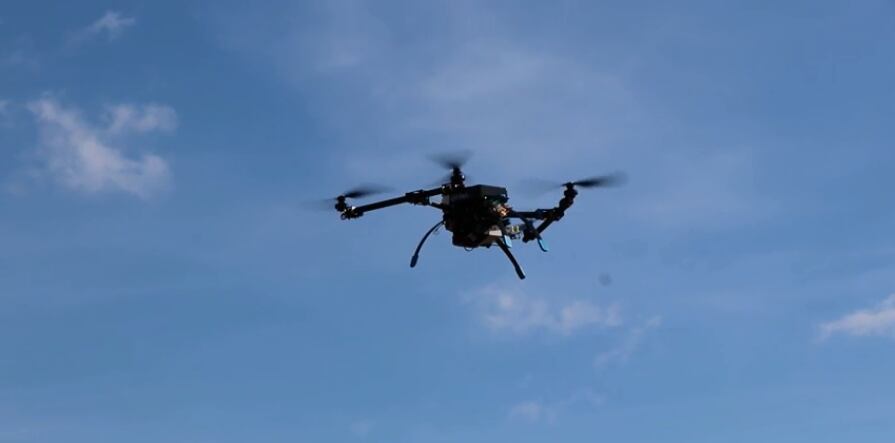The Marines are one step closer to finding ways to transport vital supplies to Marines on the move via drones.
In 2020, the Corps sought prototype drones that would be able to carry a 60 pound payload on a 20 km roundtrip.
After evaluations at Marine Corps Air Station Yuma, Arizona, the Corps picked Periscope Aviation and Malloy Aeronautics to build competing drones under the Tactical Resupply Unmanned Aircraft System program.
The program is basically the Marines Corps’ way of seeing what’s available from industry for smaller payload, shorter range resupply that could be scaled up quickly for larger payloads at farther distances with the right technology investment.
Marine Corps Times recently visited the Leesburg, Virginia, headquarters of Periscope Aviation to view a demonstration of their prototype and talk with Periscope CEO Nick McCarter.
RELATED

Since the 2020 selection, the competitors have delivered an advanced version of the original model. Periscope’s MK4-R was its 2020 submission.
“From there, the Marine Corps wanted to lift more weight, so we developed the MK4-RX,” McCarter said.
In early 2021, the company delivered the MK4-RX prototype, which can carry 60 pounds on a 40 km roundtrip and 90 pounds on a 20 km roundtrip.
Company officials noted they’ve done test lifts with the drone up to 135 pounds and fly a 20 km round trip.
McCarter explained that part of the way they’re able to do that work is through a series of patents on their more streamlined design that allows the drone to travel through the air with less resistance. They also focus on use 20 percent thrust at takeoff as compared to industry competitors which can often use as much as 70 percent thrust.
That reduced thrust still allows for takeoff but doesn’t strain battery life, which translates to longer flight duration once airborne.
“We achieve this by using over-spec’d motors and props couple with extreme light weight airframes,” company officials said.
While the Marines are still evaluating the most recent prototypes, McCarter said his company’s next effort will look to the 400 pound to 500 pound payload at the same ranges.
The company has designed the device with the field in mind. The drone breaks down into six boxes which can all fit on an all-terrain vehicle such as the Corps’ Polaris MRZR. Set up and tear down can be accomplished in under five minutes and a series of push-pull locking pins clicks it together, no tools required.
It can fly in autonomous or semi-autonomous modes through simple tablet computer displays.
“Which means if you can pick waypoints on a map, you can fly this drone,” McCarter said.
He stressed the niche that a drone like this is filling. While this project is for resupply, the same drone could be used for communications relays or intelligence, surveillance and reconnaissance.
They’re made in a kind of in-between space that is more durable than the hobby drones flown for recreation or photography and the high-end, high-altitude, multimillion dollar drones used for long-range reconnaissance.
“Everything we build is designed around what that customer wants to do,” McCarter said.
Periscope falls within Chartis Federal, a company that began working with U.S. Customs and Border Patrol in 2008 to solve a communications problem agents were experiencing in rough terrain at the U.S.-Mexico border.
Agents would be cut off from communications in deeper valleys or lower areas of steep cliffs.
Chartis was able to use tethered drones over those spots to run as kind of mobile communications towers to relay signals and give agents communications in previously no-go areas.
Todd South has written about crime, courts, government and the military for multiple publications since 2004 and was named a 2014 Pulitzer finalist for a co-written project on witness intimidation. Todd is a Marine veteran of the Iraq War.
